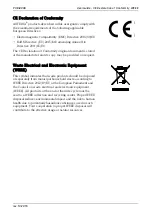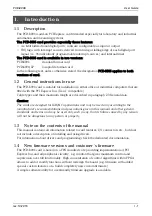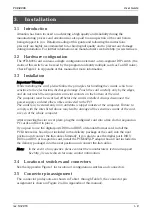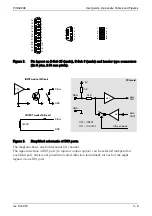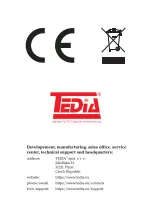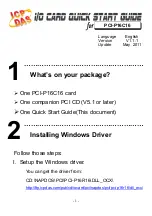
4.1
Introduction
The PCD-8006 card provides six 8-bit bidirectional digital ports.
The first three ports (identified as DIO0, DIO1 and DIO2) use the D-Sub 25 connector
located on the card bracket, the other three ports (ie. DIO3, DIO4 and DIO5) use header
type connectors located at the back edge of the card.
In case of the standard format card (ie. PCD-8006), the DIO3 port is accessed on the card
bracket via adapter cable PCE-8019 terminated with D-Sub 9 connector. Remaining two
ports (ie. DIO4 and DIO5) can be accessed via adapter cable PCE-1620 (card bracket with
D-Sub 9 connector), or other types from the PCE-16xx series adapter boards.
Note:
Unlike the adapter cable PCE-8019, the PCE-16xx boards are not included in the
delivery package of the card.
In case of the low-profile format card (ie. PCD-8006/LP) all three ports DIO3, DIO4 and
DIO5 can be accessed via adapter cable PCE-8025/LP (low-profile card bracket with D-Sub
25 connector); there are currently no other option available.
Note:
The PCE-8025/LP adaptor board is not included in the delivery package of the card.
The signal direction of DIO port (ie. input or output option) can be selected independ for
each 8-bit port (it is not possible to select direction individually for each of the eight signals
of one DIO port) from the user software.
The port direction and output data after computer is turned on or restarted are stored in the
on-board EEPROM memory and can modify by the software utility (by default, all ports are
set as input).
4.2
Description of digital ports
Drivers and receivers based on HCTMOS technology were used for digital ports.
In the output mode (ie. driver mode), the HCTMOS circuits provide true 5 V signal levels
with a high output current with low voltage drop and can therefore be used for direct
control of LEDs, optocouplers, or miniature relays (coil parameters 5 V, 500 Ohm).
In the input mode (ie. receiver mode), the HCTMOS circuits provide not only TTL signal
compatibility, but moreover high input impedance, very low leakage current and
protection diodes. The unconnected state of inputs represents the H logic level generated
by pull-up resistors 10 kOhm against a voltage of 5 V, and the inputs can be therefore also
used to direct connecting of floating contacts.
Check the Appendix, Figure 3 for detail information.
Note:
Unfortunately, the concept of bidirectional ports does not provide the overvoltage
protection available to other ports of PCI/PCIe TEDIA cards.
4.3
Interrupt logic
The PCD-8006 card allows to trigger an interrupt (simultaneously with the timestamp IRQ
generator) by any combination of rising or falling edges of the signals of all digital ports.
4.
Digital Ports
PCD-8006
User Guide
rev. 10.2015
I - 4
Summary of Contents for PCD-8006
Page 1: ...Digital I O PCIe card PCD 8006 User Guide ...
Page 12: ... PCD 8006 User Guide Notes ...
Page 13: ......
Page 14: ......




